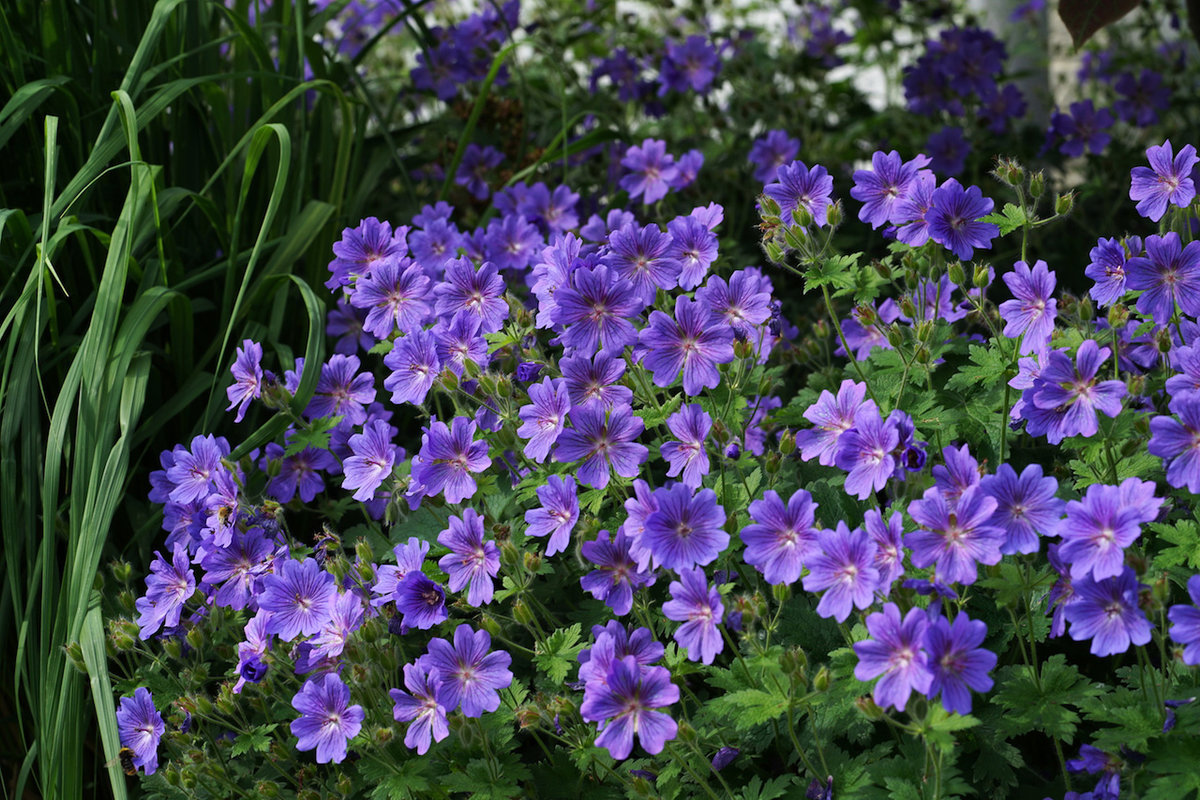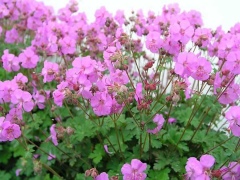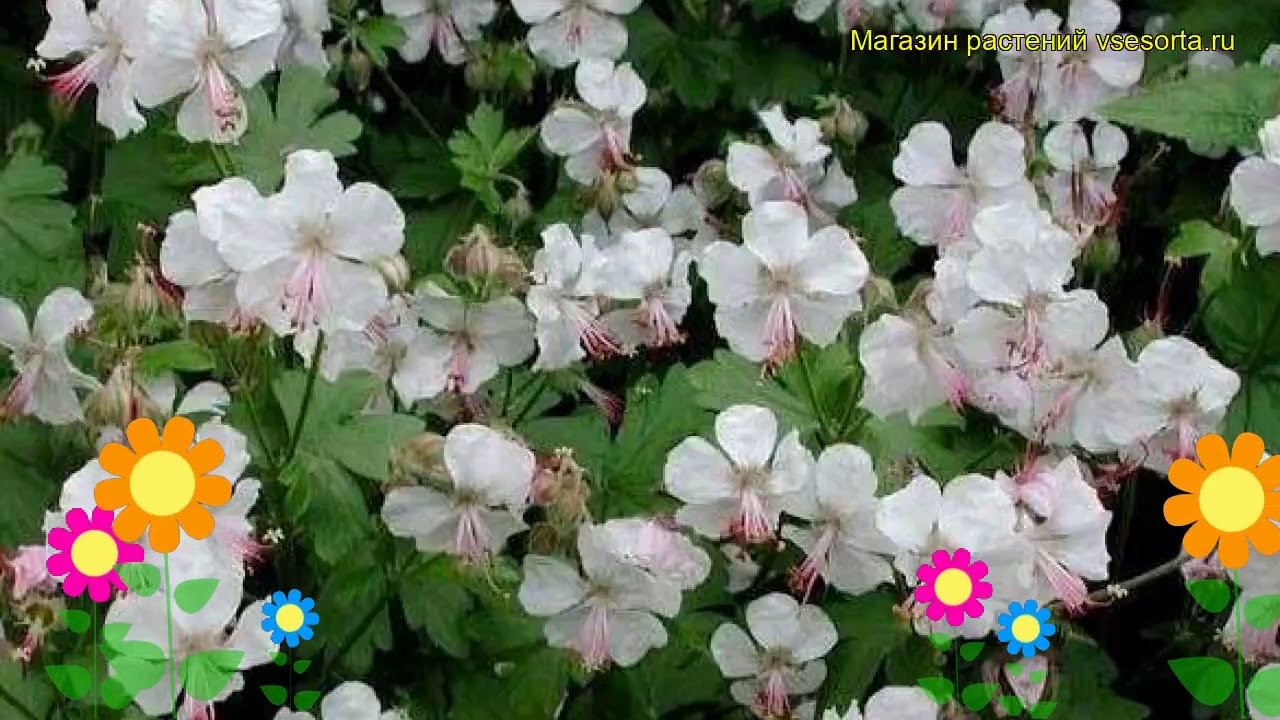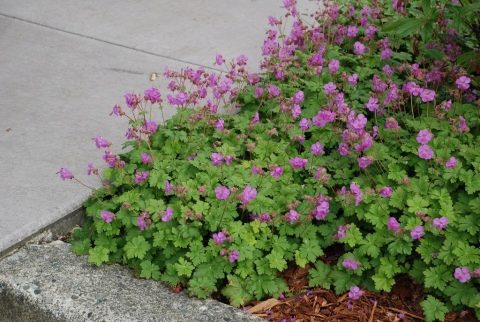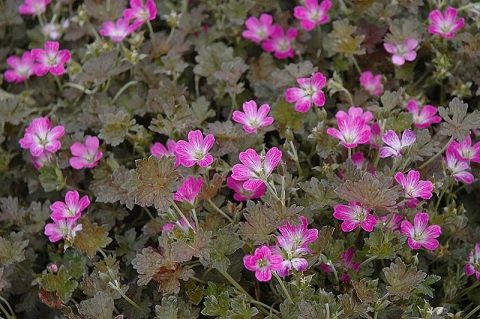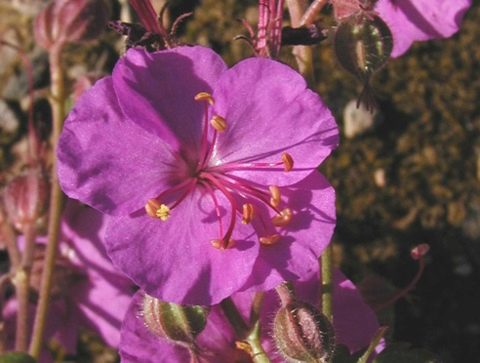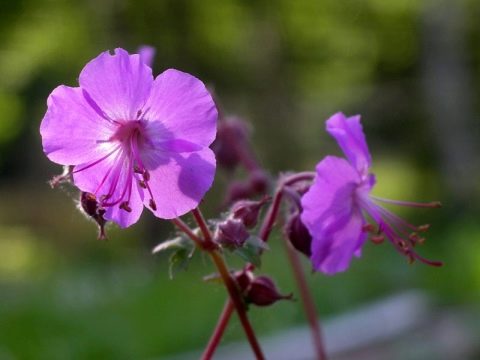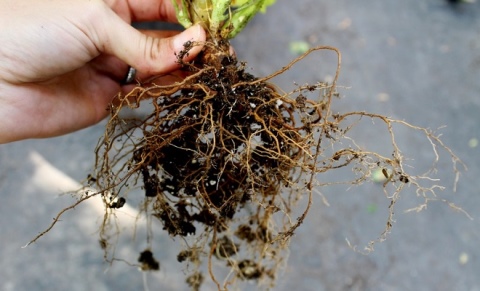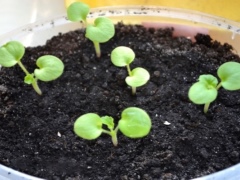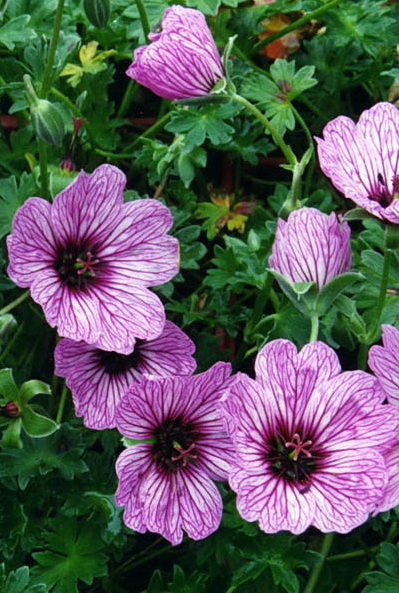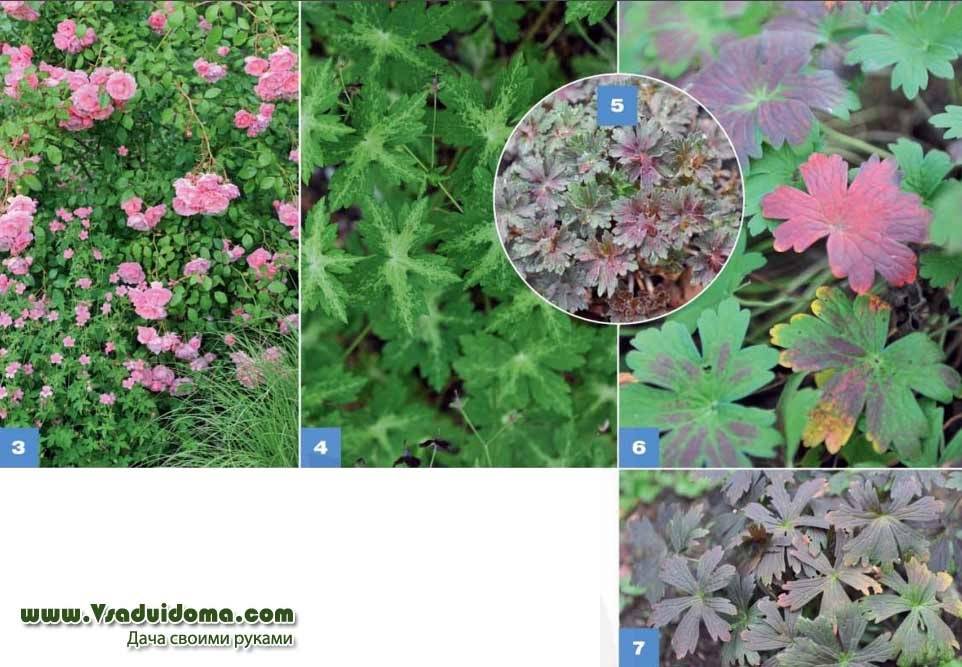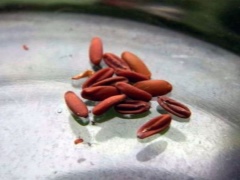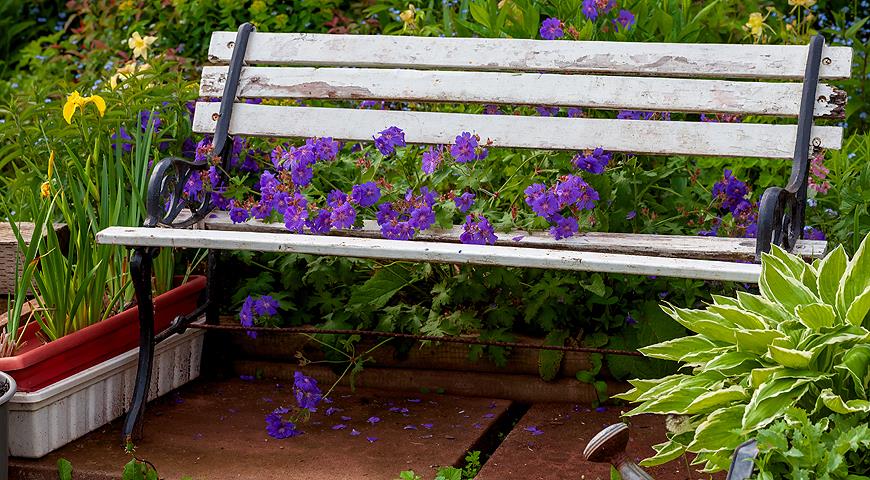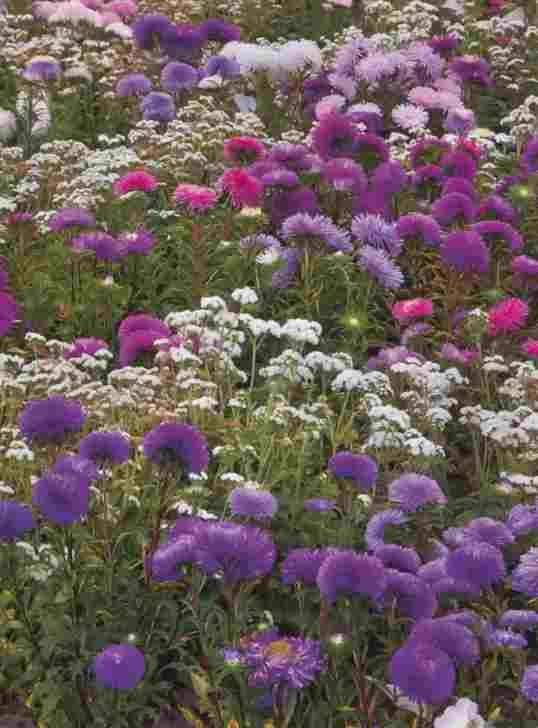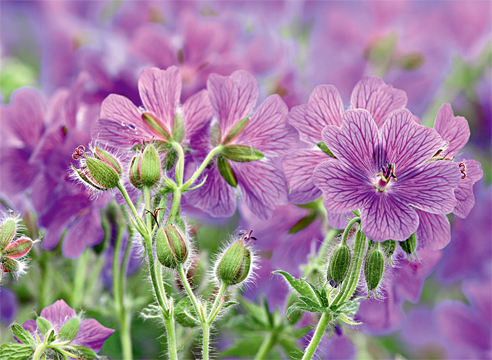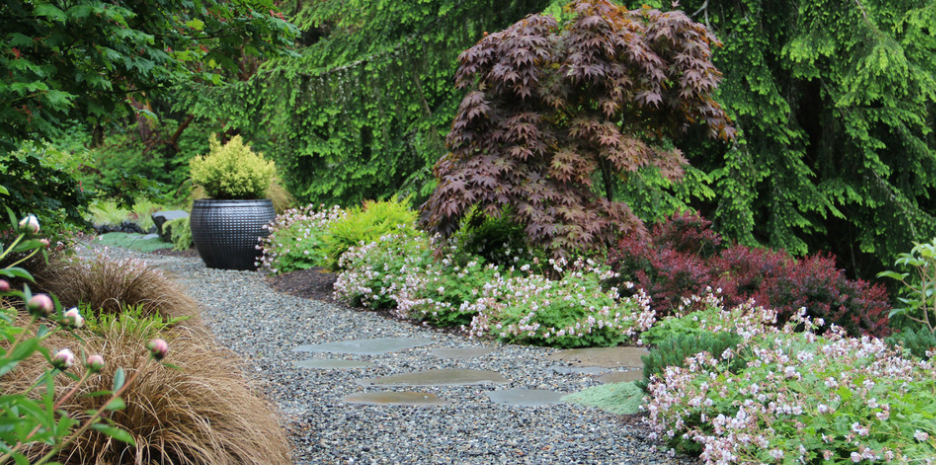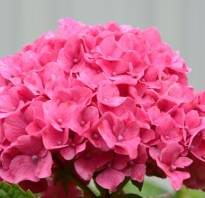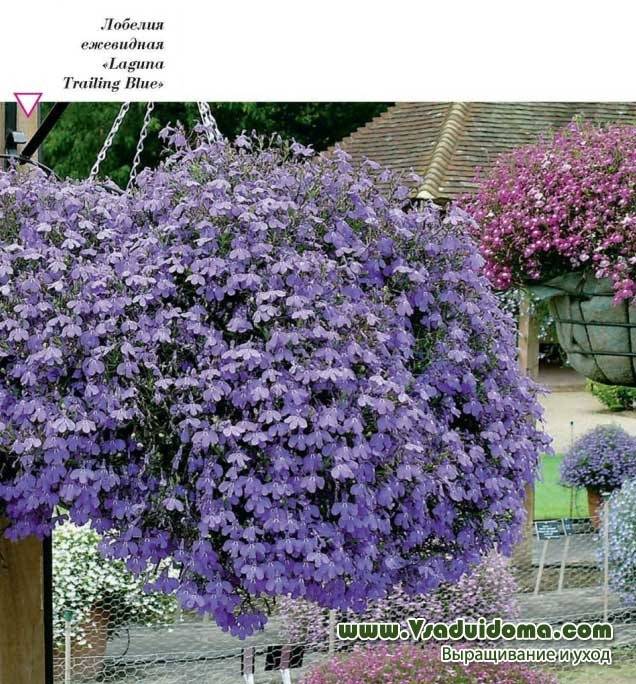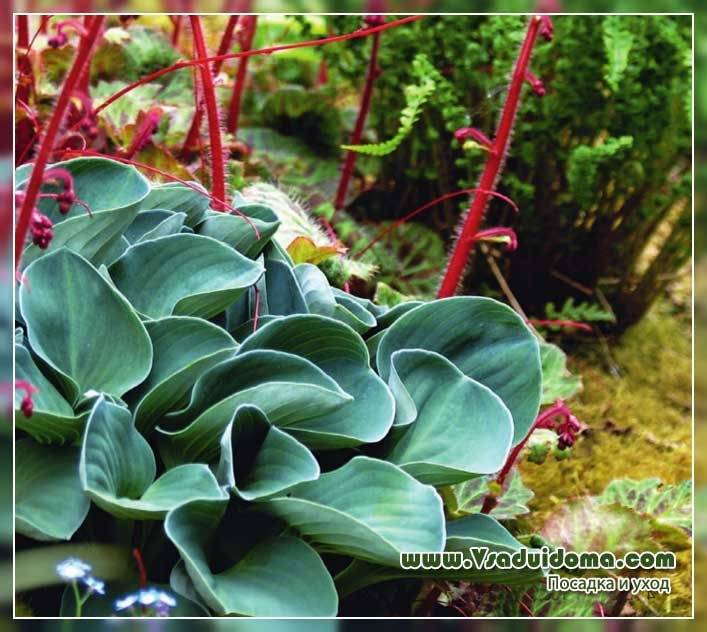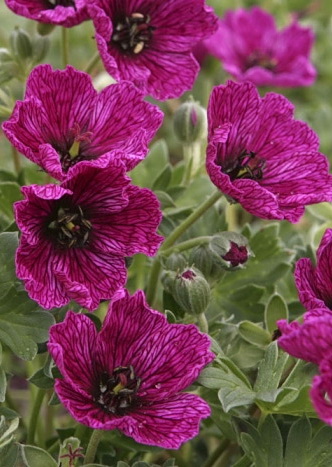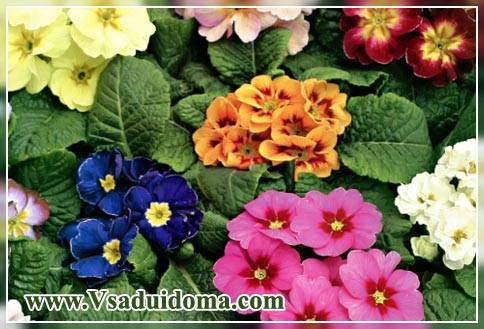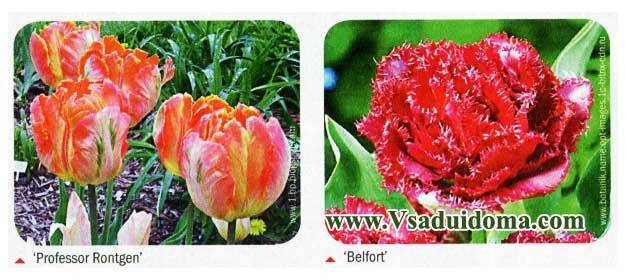Diseases and pests
The most common cause of plant disease is excessive moisture, if the air temperature is quite warm, pathogenic microbes and other parasites begin to multiply. The crane is susceptible to various types of diseases.
- Rot. This is a fungal disease that affects the root system. The affected plant is covered with a light bloom and looks like it is covered with cobwebs.
- Mushroom Botrytis. Geranium weakens and wilts, brown spots form on the stems, and partial death of the cover is observed on the leaves.
- Bacterial infections. The reason is the multiplication of microbes in conditions of warm humidity. Leaves become stained and dry from the edge. When the processes are running, the plant loses all its foliage and withers.
- Viral diseases. The crane infects the viral flora. The plant becomes stained, stops growing and eventually withers.
- Edema. The bubbles with liquid on the herbaceous part of the geranium resemble edema. When it bursts, the affected area takes on a brown tint. The diseased plant turns yellow and wilts. The disease can affect him while staying in conditions of high humidity and low temperatures.
- Pests that attack geraniums include aphids, whiteflies, and spider mites. Persistent heat can lead to infestations of parasites. A diseased plant should be actively washed with an aspirin solution (one tablet per 8 liters of liquid), then treated with insecticide preparations.
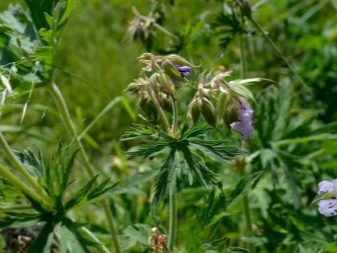

Meadow geranium
Meadow geranium (Geranium pratense) is a dense perennial 60-90 cm high and 60 cm wide; originally from Europe, Central Asia, Western China.
Meadow geranium. Photo from the site commons.wikimedia.org
Leaves with hairy pubescence, 7-9-lobed, deeply dissected, serrated, 20 cm long. Flowers are saucer-shaped, from white and blue to purple, 3.5-4.5 cm in diameter; bloom in early and mid-summer.
Decorative forms and varieties:
- f. albiflorum - white flowers, long flowering (until the beginning of autumn);
- 'Flore Pleno', syn. ‘Plenum Violaceum’ - double flowers, violet-blue, with a purple-blue center;
Meadow geranium f. albiflorum. Meadow geranium 'Flore Pleno'.
- ‘Galactic’ - 75 cm high, white flowers, up to 5 cm in diameter;
- ‘Mrs. Kendall Clark '- the leaves are gray-green, the flowers are light pink, although it is often offered for sale with purple-blue flowers with white veins;
'Galactic' meadow geranium. ... Meadow geranium 'Mrs. Kendall Clark '.
- 'Kashmir Purple', syn. G. clarkei 'Kashmir Purple' - 60 cm high, light blue flowers; bloom in the middle of summer;
- 'Kashmir White', syn. G. clarkei 'KashmirWhite' - 45 cm high, flowers 2.5-4 cm in diameter, white, with light purple-pink veins;
Meadow geranium 'Kashmir White'. ... Meadow geranium 'Kashmir Purple'.
- ‘Plenum Album’ - double flowers, white, with a slight purple tinge;
- 'Plenum Caeruleum' - double flowers, lavender-blue, with a slight pink tint;
Meadow geranium 'Plenum Album'. Meadow geranium 'Plenum Caeruleum'. Meadow geranium 'Plenum Purpureum'.
- ‘Silver Queen’ - white flowers with a slight light purple tint;
- ‘Striatum’, syn. ‘Bicolor’ -white flowers with purple-blue strokes on the petals;
Meadow geranium 'Silver Queen'. Meadow geranium 'Striatum'. Photo from primrose.co.uk
'Plenum Purpureum', syn. 'Plenum Violaceum' - double flowers, purple-blue.
See more about geraniums on the website:
Forest and field plants in the garden: geraniums
How to plant geraniums with a shoot without roots in a pot
Geranium shoots are obtained in different ways. You can buy ready-made cuttings, take from friends, or cut them from a home plant. There are different ways to plant geraniums with a shoot without roots. The rooting time depends on the type of flower. Simple varieties take root within two weeks, while royal varieties take at least 1.5 months. It is useful for flower growers to know how to plant geraniums without roots and how to grow rhizomes.
Optimal time for cutting off the shoots
Novice florists are interested in the question of when it is possible to make cuttings. Seedlings of this flower are prepared at any time. But, as practice shows, shoots planted in spring take root and develop best. This is due to the fact that during this period the plants wake up after winter, active sap flow begins, and the shoots grow rapidly. Summer seedlings, planted from mid-July to early September, also develop well. Cuttings obtained at other times of the year do not grow well and may even rot.
Important! The best breeding season for geraniums is considered to be from March to May, and winter is less favorable.
Cutting preparation
Cuttings are cut with a very sharp knife, after having disinfected it. An incision is made 1 cm below the knot at a right angle to the trunk. The shoots are cut to 7 cm in length. They must have at least 2 leaves. The inflorescences and buds are cut so that all the forces of the new shoot are directed to the formation of roots.
The cut sprout is dried in a dark place at room temperature until a film forms at the cut site. This is necessary to protect the shoots from the possibility of infection.
Harvesting geranium cuttings
Ways to get roots from a shoot
Apical cuttings take root best. But in order to get viable seedlings, you need to know how to transplant geraniums with cuttings without roots. They are recommended to be rooted in soil, not in water. The stems accumulate moisture and can rot over time. Roots appear faster in water. Therefore, flower growers prefer this particular method of breeding geraniums.
In order to prevent the death of the sprout, it is necessary to constantly monitor the process. Geranium is immersed in settled water at room temperature to a depth of no more than 2 cm. The container with the liquid should be dark opaque. Coal diluted in water will help reduce the risk of decay.
With the soil method of rooting, the shoot is dropped to a depth of 2 cm. Before planting, the cuttings are treated with powdered coal. For better growth, the tip is sprinkled with a special stimulant. Any primer can be used for home flowers, well-drained and loose.
Important! The main danger for hydrangeas is rotting. Therefore, the soil in which it is planned to plant it is pierced on fire, treated with a solution of potassium permanganate
Abundant watering is not required when growing the root system. It is enough to ensure that the earthy clod does not dry out. Protect young shoots from direct sunlight.
Rooting process
The finished seedlings are planted in a pot and looked after as a mother plant. Drainage is placed at the bottom of the container, a mixture of universal soil, vermiculite and sand. The day before planting, the ground is watered with a solution of hot potassium permanganate. The sprout itself is deepened into the soil strictly in the center of the pot.
For your information! Different varieties of geraniums have their own rooting period. Some of them take up to 1.5 months to settle down.
Caring for a rooted shoot
After planting, the flower pots are placed in a dark place. After five days, they can be rearranged on the windowsill, protected from direct sunlight. If the leaves dry up, then cover the plantings with a film or a jar. The shelter is removed after the young bushes return to normal. Watering is carried out regularly with a small amount of water.
Important! During watering, young geraniums need to be protected from drops. Excess moisture can lead to decay and death of the plant.
Cuttings will develop rapidly at room temperature in a well-lit area. If you follow these simple rules, young sprouts will delight you with abundant flowering in a few months.
Transfer to a permanent place
Successfully rooted cuttings can be transplanted to a permanent location. The maturity of the sprouts is evidenced by the appearance of young leaves. The transplant is carried out in flowerpots with light and loose soil, which are exposed to the windows from the west and east sides. In the summer, flowers are taken out into the street.In winter, the optimum temperature for keeping is no more than 15 ° C. Watering is reduced.
Description of the species
Zdravets, or large-rhizome geranium, is a herbaceous perennial plant. It is characterized by glandular pubescence, as well as a pleasant and strong smell. Ascending or upright roots. The flower itself forms a branched stem, which can grow 20–40 cm high.
Rosette basal leaves have long cuttings. They can be finger-split with 5-7 divisions. In length, they reach 10–20 cm. The upper leaves are opposite and sessile, tripartite.
The bush blooms in pink-purple, pale pink, or blood-red flowers. On one peduncle, 2 flowers are collected. The plant begins to bloom in June. Flowering lasts about a month. After flowering is complete, fruits are formed on the bush that look like a box. They ripen in July or August.
Plants of this species are distinguished by an elegant and decorative appearance, they form very beautiful flowers and foliage. Therefore, they are often used as elements of landscape design. Large-rhizome geraniums are often planted in park beds. It is great for planting under trees. It can also be used in place of a lawn.
In addition, this species of pelargonium is considered a medicinal plant. The roots and leaves have medicinal properties (hypotensive, wound healing, astringent effect). Therefore, folk remedies are often prepared from this flower for the treatment of disorders of the nervous system and heart.
You can eat the rhizome. Also in cooking, the aerial part is used, which has a pleasant fruity aroma. It resembles the smell of pineapple and strawberry.
Popular representatives
In the garden, on the flower bed, you can grow hundreds of varieties of large-rhizome geraniums. About 40 subspecies of this culture can grow on the territory of Russia. Most often, 12 southern European varieties are found in the gardens of our country.
Geranium of the Cambridge variety is very popular with gardeners. The look was obtained by crossing a large-rhizome variety with a Dalmatian one. Bred in the UK in the past century. The variety got its name thanks to Cambridge. This plant is sometimes called the Cantabrian geranium.
In the wild, it grows in the Balkans. Unlike the progenitor, the wild species does not grow much. The variety is characterized by fast growth. In height, the shoots of the Cambridge geranium can grow up to 20 cm. The appearance of the flowers depends on the subspecies. Flowering usually begins in early summer.
In addition to the Cambridge variety, the following varieties are among the best garden species:
- Bevan's Variety;
- Ingwersen's Variety;
- Czacor;
- Variegatum.
Let's consider them in more detail.
Bevan's Variety
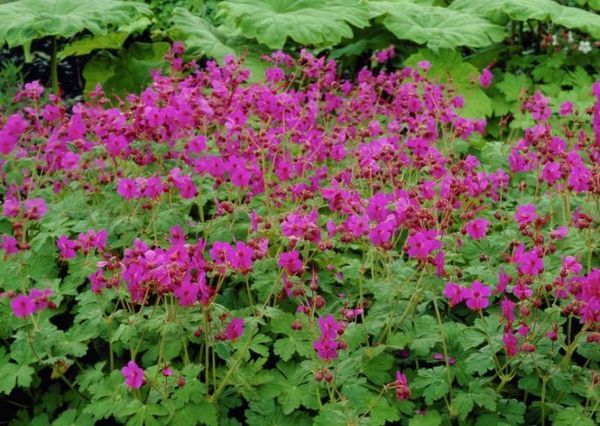
The bush grows to a height of about 30 cm. It is 40 cm in diameter. The leaves are bright green. Their shape is elongated and rounded. The leaf blade is divided into 5–7 coarsely toothed lobes. Shoots are raised above the basal leaves.
The plant blooms with pale pink or red-purple inflorescences of a dark color with light venation. The diameter of the flowers is no more than 2.5 cm. The flowering is lush. Seeds ripen at the end of July-August.
Ingwersen's Variety

A shrub with a cushion-shaped crown. Its stems grow to a height of 30–40 cm. The leaf blade is rounded. She is deeply cut. The leaves are light green.
Geranium blooms with purple-pink or light pink flowers with cups of bright pink hue. Their diameter is 2.5 cm. Flowering begins in mid-June and lasts until the end of July.
Czacor
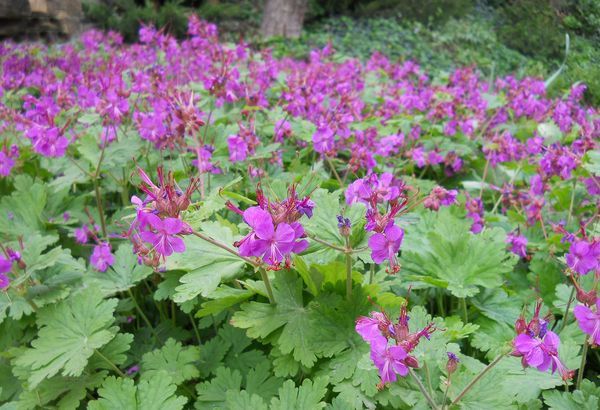
The height of the shoots of this variety does not exceed 30 cm. The plants are distinguished by a long and thick rhizome. Thanks to him, geranium, when growing, forms a closed and dense thicket.
The leaves are round-elongated. They are divided into 5-7 beats. The edges of the leaf blade are coarsely toothed. The leaf is colored green with a purple tint. Its surface is shiny.
Peduncles are umbrella-shaped.They form red, purple or purple-red inflorescences with a diameter of 3.5 cm. The flowering period is 20-30 days. The first flowers appear in June.
Variegatum

It is a bush 30 cm high. On the stems, gray-green leaves are formed. The leaf blade has creamy yellow stripes. Inflorescences are purple-pink.
Garden geranium as prima donna
Oddly enough, this modest plant has species and varieties that can play the role of a dominant in a flower garden. One of these species is small-grained geranium, or Armenian (Geranium psilostemon syn.armenum), known for its enchanting flowering. And the hybrid geranium 'Patricia' not only inherited its bright appearance from the Armenian, but also blooms profusely almost all summer, sometimes with a short break in August. The variety is so expressive that it is rather difficult to find partners for it. An adult bush in the process of flowering "unfolds" more than a meter in diameter, while at the ground its base occupies a relatively small area. When drawing up a flower garden, this feature must be taken into account so that the neighbors are not buried under the mass of spreading flowering stems. Spring bulbs can be planted in the immediate vicinity of the base of the bush. By the time their foliage loses its decorative effect and begins to turn yellow, geranium will just gain volume. In theory, Patricia is photophilous and good for watering, but it grows well and blooms in light partial shade on dry and very dense clay.
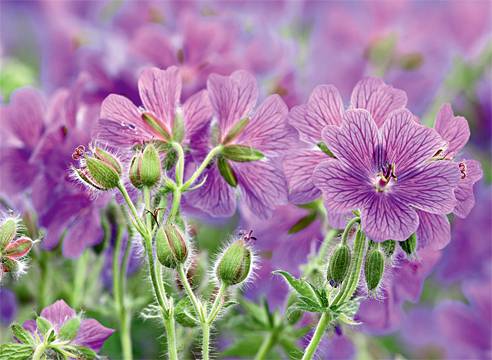 Geranium Wallichianum Buxton's Variety and the hybrid Jolly Bee very similar to it are short (about 30 cm), but all season are strewn with numerous large sky-blue flowers with a white center. These geraniums also "fall apart" during flowering, and this feature can be successfully used for replanting galanthuses, woods and muscari. The Wallich geranium will bloom abundantly only in an open, sunny place.
Geranium Wallichianum Buxton's Variety and the hybrid Jolly Bee very similar to it are short (about 30 cm), but all season are strewn with numerous large sky-blue flowers with a white center. These geraniums also "fall apart" during flowering, and this feature can be successfully used for replanting galanthuses, woods and muscari. The Wallich geranium will bloom abundantly only in an open, sunny place.
The Orion hybrid is a cross between Patricia and Wallich's geraniums. It forms a huge bush, reaching almost one and a half meters in diameter, covered with rather large purple-blue flowers with shiny silky petals.
Reproduction of garden geranium
Garden geraniums are propagated by pieces of rhizomes and seeds. In one place without transplanting a geranium bush can grow for 8-10 years or even more, and only then the plant can experience the need to rejuvenate the bush. Dig the bush in the spring before flowering or after it. Only young, healthy rhizomes with developed buds are left, and the old ones are removed. The plant forms new roots very quickly and takes root well in a new place.
The seed method is not as good as the previous one and is more laborious, moreover, varietal characteristics are not preserved with it. It is better to sow fresh seeds, but collecting them is rather problematic, since when fully ripe, the valves burst and the seeds fly in different directions. Seedlings bloom the next year after planting.
Transfer
Blood red geranium does not require constant transplants, but still experienced flower growers recommend carrying it out as the plant grows.
The substrate must be loose and light with high air and water permeability. Each new pot should be 1–1.5 cm larger than the previous one. The transplant is carried out according to the following scheme:
- a new container must be disinfected, drainage must be laid out and sprinkled with fresh soil mixture;
- the plant is watered abundantly, and then carefully pulled out together with an earthen clod and transplanted into a new pot;
- all the voids formed are filled with new soil and compacted;
- after that, it remains only to water the flower and leave it in a warm place for adaptation.
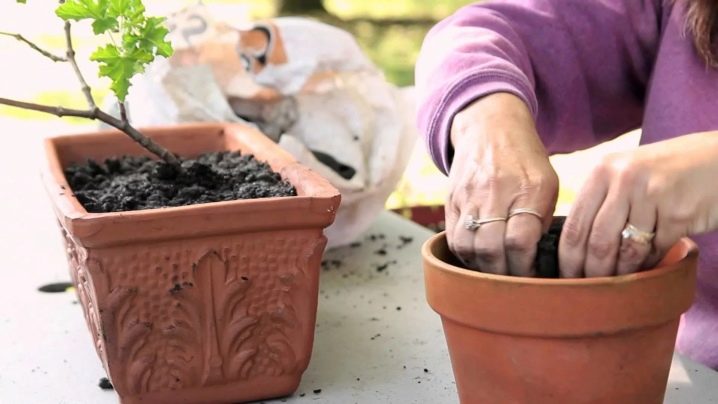
Plant care
The most important factors in caring for Rosanna are sunlight (at least 6 hours a day), drainage, regular watering and occasional mineral fertilization. The flower will feel great both on an open surface and in a flowerpot.
The sun's rays contribute to the vivid flowering of the plant, but you should not abuse the light at the same time - harmony must be observed in everything. If the light is sorely lacking, the plant stops blooming and soon dies. Avoid direct sunlight.
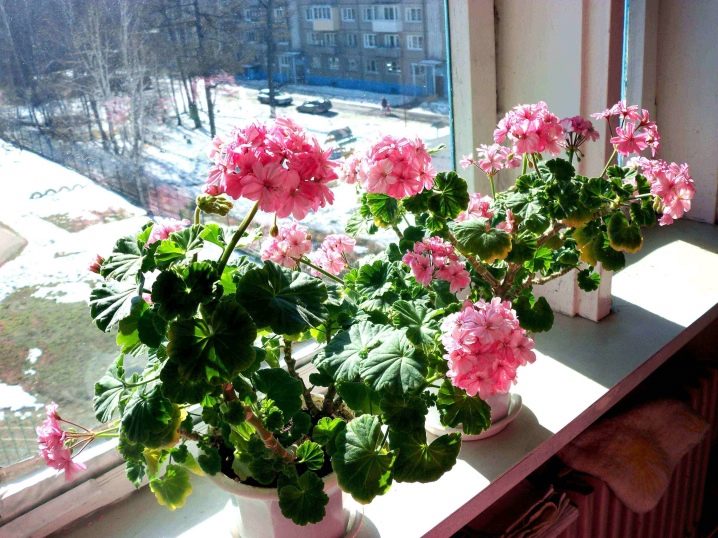
Watering should be done only after the soil of the plant is completely dry, not otherwise. Do not flood the plant as the root system may start to rot. It is better to use water for irrigation at room temperature, there is no need to spray the plant. If the geranium is in a flowerpot, water can be added to the pan.
- Geranium does not need an annual transplant. The only exception to this rule is the situation when the flower simply does not fit in the flowerpot. In this case, even separation of the rhizome is possible. If possible, then geranium should be transplanted to open surfaces.
- It should not be forgotten that in the spring "Roseanne" requires mineral and organic feeding.
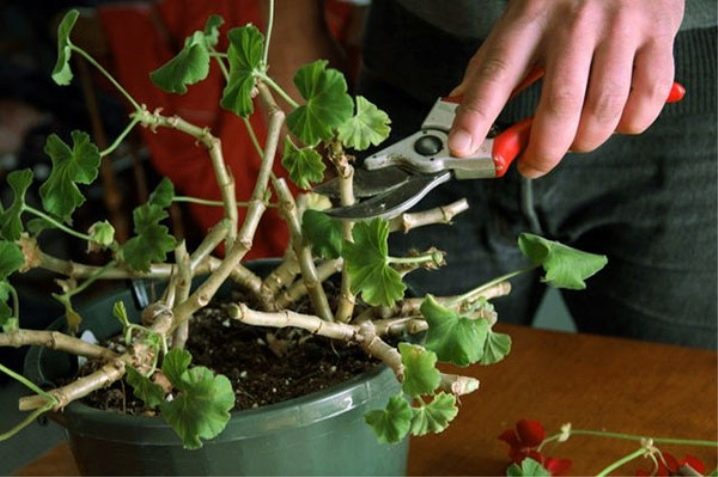
Features of flowering plants
Blooming blood-red geraniums fall during the summer and can last the entire season. However, this property is not typical for all varieties of this species. Some varieties have their own distinct periods of growth, flowering and dormancy.
A period of activity and rest
Most varieties start flowering in June-July. It lasts until mid-August. Fruiting begins in September. Some varieties have an extended flowering period from the first half of June to the first decade of September.
After the roses begin to wither and the seeds fall out of the capsules, the plant begins to enter a dormant period, which lasts until the end of April next year.
Self-seeding usually begins to bloom in the second year, seedlings give the first color in the year of planting.
Types and forms of flowers
In red geraniums, flowers bloom unevenly, usually one or two at a time. Flowers collected in inflorescences bloom within 2-3 days. Single large ones usually open within 3-5 days on one plant. The petals have straight, semi-double and double ends.

